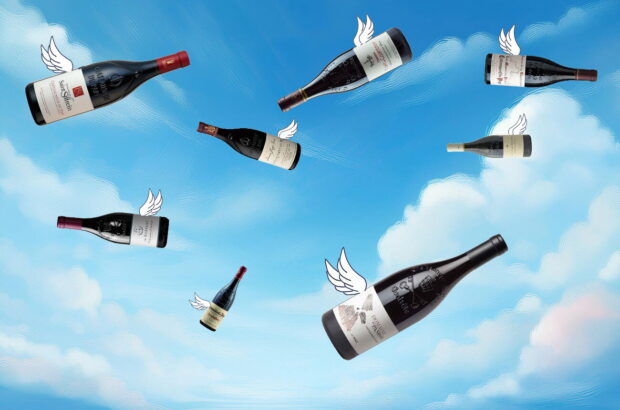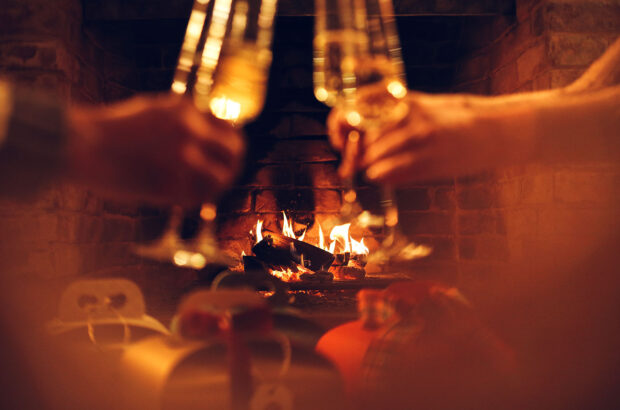It seems curious to me that Montecucco, neighbouring Montalcino and not far from Montelpulciano, does not attract a greater level of wine tourism.
Montecucco is often written of as a ‘hidden treasure’ in the wine world. Yet most of its seven communes lie at about 300m to 450m on the slopes of Monte Amiata, the second highest volcano in Italy. Arguably, hidden they are not.
For wine lovers, navigating your way around the wineries is straightforward, though you will need a car – or a fine pair of walking boots. The wine estates are well signposted and, should you find yourself overdoing the tastings, most offer accommodation.
Whether you are heading south to Montecucco from Pisa airport, or are on the motorway up from Rome’s Fiumicino airport, you cannot miss Il Civettaio winery and agriturismo – a claret-coloured farmhouse perched on top of a hill in Paganico, on the fringes of Montecucco.
It’s a fabulous first stop on a tour of this wine region, where you’ll receive a warm welcome from the owner Gregorio. Be sure to take a glass of his Vermentino onto the terrace and feel that sea breeze enjoyed by the vines. Vermentino reveals itself to be a very sensitive and expressive interpreter of terroir in Montecucco: certainly a white wine to watch.
From Il Civettaio, the wild beaches of Albarese are just a 25-minute drive away – Paganico is one of the communes closest to the coast. There is only one main road heading up the mountain from Paganico, along which you can enjoy fabulous views of both Montecucco to the right and Montalcino to your left.
But a 15-minute detour on a minor road towards the commune of Cinigiano will bring you to one of the oldest and most illustrious wineries in the region, namely the family-owned Azienda Agricola Salustri. This was one of the first estates to support and promote the DOC Montecucco in 1998. Though it may be one of the most established wineries, its approach to vineyards and winemaking is innovative. From its spot on the hills of Poggi del Sasso, it works with the University of Enology in Pisa to better understand and safeguard the indigenous clones of Sangiovese that can be found within its oldest vineyards.
Fact file
Seven communes Arcidosso, Campagnatico, Castel del Piano, Cinigiano, Civitella Paganico, Roccalbegna, Seggiano
Main grapes Red Sangiovese, Merlot, Cabernet Sauvignon, Ciliegiolo; White Vermentino, Trebbiano, Malvasia
Main soils Iron, calcium and magnesium-rich volcanic soil and clay
Planted area 800ha (500ha to DOC/DOCG)
Production 1.8m litres (1.2m DOC/DOCG)
Back to the main road and on to a new winery that’s run by a highly regarded butcher, Carlo Pieri at Poggio Stenti. Macelleria Norcineria is his small family butchers in Sant’Angelo Scalo, on the border of Montalcino and Montecucco. The family has always made wine for themselves and friends from the fruit of their vines in Montecucco, but have recently begun to expand and make wine commercially.
If you call ahead to book a wine tasting with the Pieri family at their lovely home, you can ask them to prepare a selection of their salumis and hams. Or even stay for lunch, as they have a professional kitchen on site. The porchetta is outstanding – the salt and herbs the pork is roasted with bring out the most wonderful sweetness in their Sangiovese.
The hilltop village of Montenero d’Orcia, with its 13th-century fortress surrounded by 10th-century walls, is a short drive from Poggio Stenti and well worth a visit. The draw for me, however, is the annual Sagra della Lasagna festival in May. Long communal tables line the streets for guests to sit and feast on traditionally made lasagna with a glass (well, a plastic cup) of delicious Montecucco Rosso.
I would look to fill my cup with the wines made in Montenero by young brothers Marco and Emmanuele Innocenti at their winery and agriturismo Peteglia. Marco hosts a scintillating tasting in the family restaurant – he is clearly excited by the potential in Montecucco for quality wine, and speaks passionately about both the Sangiovese and the single-varietal Cabernet Sauvignon that he produces.
He questions my description of the land here as ‘wild’: due to the lack of monoculture he asks? Monoculture should not be the ‘norm’, he says. ‘It’s better for vines to have the possibility for conversation between other plants and other trees.’ His equally eloquent wines convince me that he is right.
In the Peteglia winery there are only the large Slavonian botte that you find in Montalcino – and some second-use French tonneaux. The riserva spends two months on skins and then a very traditional 36 months in bottle. Though there are no barriques, there are some small caratelli, little barrels used for making vin santo. Marco is producing a tiny amount of sweet wine that will soon be ready for commercial sale.

Sangiovese vines near Montenero d’Orcia. Credit: Daniela Marchi
From the same road that leads from Montenero to the top of the mountain, it is possible to see Castello di Potentino, meaning ‘the little powerful one’. Looking down the valley past Montegiovi, it lies to the left. It’s a medieval castle built on an Etruscan site in Seggiano, on the slopes of Amiata in the eastern part of Montecucco. It was bought in 2000 by the Greene family (descended from British novelist Graham Greene) and is now their home as well as a luxurious bed and breakfast, working winery and a classical music venue.
Winemaker and co-owner Charlotte Horton makes varietal wines from Sangiovese, Grenache and Pinot Noir, and should you visit at harvest time you may get the chance to join in the foot pressing of the grapes to produce the estate’s house wine.
The pressing takes place in the ancient stone basins, the pestarole, found along the river that runs by the castle. They date back to Etruscan times, and their strategic positioning by the river suggests the wine may have been shipped out to sea – answering a demand, millennia ago, for Montecucco Rosso.
Getting there
Fly to Pisa, hire a car and it’s roughly a two-hour drive south, in the direction of Grosseto. From Rome airport, it’s a 2.5-hour drive north.
Formerly head sommelier and wine buyer at The River Café in London, Emily O’Hare is now a wine writer and educator based in Tuscany. This first featured as part of a travel guide in the Decanter May 2019 issue.







